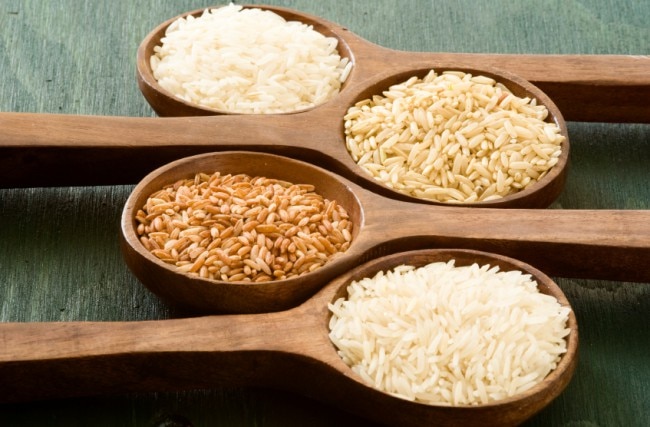In the last few years, federal government scientists and regulators and food industry officials are trying to figure out how to set new regulations for arsenic in rice products. It turns out (call me gob smacked) there is emerging evidence that arsenic, a known human carcinogen, contaminates a bevy of common foods that contain rice. Many scientists have concluded that arsenic levels in rice are a legitimate fear, and recommend consumers shop with caution, choosing foods selectively to lower their chances of consuming excessive arsenic.
What’s arsenic?
This is what the FDA has to say about arsenic:
“Arsenic is present in the environment as a naturally occurring substance or as a result of contamination from human activity. It is found in water, air, soil and foods. In foods, arsenic may be present as inorganic arsenic (the most toxic form of arsenic) or organic arsenic. FDA has been monitoring the levels of arsenic in foods for decades, and in 2011, increased its testing.”
Why rice?
Because rice is grown in water it’s particularly vulnerable to arsenic infiltration. Rice absorbs the arsenic through the water, and therefor has higher levels of arsenic than other foods. Advances in testing have allowed the FDA to get much more detailed information about arsenic levels in foods.
The type of rice and where it is grown are all factors that determine contamination levels. Brown rice shows higher levels of arsenic than white rice, which during processing has the layers of the grain where arsenic tends to collect removed. Rice grown in southern states tends to have higher levels of arsenic in the soil than rice grown in California. According to Consumer Reports, white basmati rice from California, India and Pakistan, and sushi rice from the U.S. on average has half of the inorganic-arsenic amount of most other types of rice. The FDA found that arsenic levels ranged from 7.2 micrograms (a millionth of a gram) to 2.5 micrograms per serving. Rice crackers averaged about five micrograms.
What to do?
Despite a fair amount of exposure fatigue, I have to admit that I am a little concerned about rice—given that brown rice is a staple food for dinner in our household. I’m adding it to my list exposure dangers, which already includes pesticides, GMOs, BPA and other estrogenic activity chemicals, and toxins in personal care products. According to a recent article in Environmental Health Perspectives, “The U.S. Environmental Protection Agency (EPA) currently designates arsenic as a nonthreshold carcinogen, meaning that any dose, no matter how small, carries some cancer risk. Some scientists don’t agree—they say doses below a certain threshold won’t cause cancer, a debate that has yet to be resolved.”
Children are particularly susceptible to low doses of arsenic. The FDA currently advises parents to consider diversifying the grains they feed their infants and toddlers, and encourages all consumers to read products labels for rice-based ingredients, and to consume a variety of grains. The EWG recommends exercising moderation for adults as well, suggesting, “limiting consumption of rice and rice-based food when possible and instead eat a varied diet of healthy lower-arsenic grains and sweeteners.”
There is no simple way to determine how much rice-based food you can safely eat. Keep in mind that rice products such as puffed rice, rice cakes, rice wafers and rice crackers have even higher levels of inorganic arsenic than mere rice. An article in the New York Times quotes Brian Jackson, director of the Trace Metal Analysis Core Facility at Dartmouth College, as saying “If you are a person who is eating rice every day, and also snacking on rice products, then that five micrograms from rice crackers becomes significant.”
Consumer Reports has published a useful index that measures arsenic levels in a range of rice products. To find out more, click here.
Lastly, before you throw out the rice with the rice water—try adding more water. By changing the way you cook your rice, you can reduce the arsenic content. Start by rinsing your rice, which is a particularly effective way to remove roughly 10 percent of arsenic from basmati rice. Other research indicates that the amount of arsenic in rice can be cut by as much as 40 percent if the rice is boiled in a large volume of water like pasta and excess water discarded.

